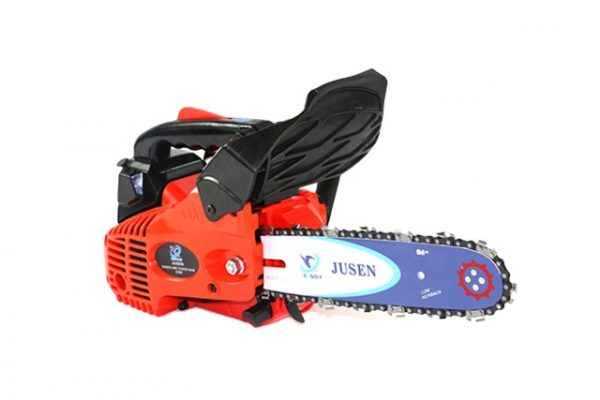Project Report For Chainsaw Manufacturing
Introduction
Project Report for Chainsaw Manufacturing is as follows.
This agricultural machinery is simple to maintain and has a compact design, sophisticated operation, and extended service life. Our equipment is smooth to operate, which extends its useful life and increases the effectiveness of wood cutting operations. Hard and soft woods can both be cut using chainsaws.
When you utilise our safe-to-use equipment, cutting wood becomes much easier and more efficient. Only specialists should use our chainsaws. They, like other agricultural machines, require frequent maintenance to perform correctly and fast. Because they are equipped with modern technology, they are ideal for jobs such as harvesting bamboo, cutting firewood, and other chores.
Chainsaws are commonly used by professionals such as loggers and builders, as well as homeowners for duties such as property maintenance and firewood cutting. They are strong and flexible instruments that may make a variety of cutting chores easier and more efficient. However, when using chainsaws, it is critical to observe all manufacturer’s instructions and safety requirements.

Manufacturing Process Of Chainsaw Manufacturing
A solid steel bar is the first step in the fabrication of solid chainsaw bars. The steel is laser-cut by the machine into the required basic shape. This includes the elongated hole, bores, and exterior contour. When you consider the procedure, the laser leaves very little steel behind in the cut, and Stihl even recycles the scrap steel. stainless steel rollers feed the guide rail material. This steel is fed directly into a stamping press that cuts out each of the three parts (two outer and one inner). The layers are then electrically welded together.
“Electrowelded” sounds like a simple term. In fact, they have to line up three pieces of steel correctly. Then enter the welding press. The press applies up to 20 tons of pressure. At this point, they are welded together with the electrodes. However, this process requires one more step. Without proper cooling, the bar will warp. A controlled cooling process keeps the bar straight and follows the welding process.
The solid bar’s snout is then laser welded to add a cobalt-chromium alloy called Stellite to make it more resistant to wear. After that, the front end is smoothed out with a massive belt sander. It then brushes it clean.
The final step in the production of steel chainsaw guide bars is painting the chainsaw guide bar. Painting is completely automated. It applies a light coat of water-based paint with no considerable overspray before beginning the drying process.
Project Report Sample on
Chainsaw Manufacturing
Get Completely Custom Bankable Project Report
Market Potential for Chainsaw Manufacturing
The global chainsaw market was valued at $3.60 billion in 2021 and is expected to be $4.92 billion by 2030, increasing at a 3.5% CAGR from 2022 to 2030.
The growing use of chainsaws for numerous developing applications is expected to provide profitable growth opportunities for market participants. Rapid industrialisation in emerging economies is prompting major global industry players to invest in the target industry. Furthermore, ongoing technological advancements in chainsaws contribute to the industry’s growth.
Furthermore, in the leading countries, increased acceptance of electrical vehicles and a developing construction sector are increasing chainsaw adoption, which is expanding the market. Similarly, developing countries around the world are focusing on increasing the chainsaw business in order to supply chainsaws to end use industries.
Additionally, the demand for wood-based flooring, panels, roofing, etc. is driven by rising consumer living standards and a growing focus on interior design. Accordingly, there is an increase in the usage of chainsaws in the making of furniture due to rising per-capita spending on high-end and premium hardwood furniture. Increasing rates of urbanisation and deforestation for infrastructural development are now fueling market expansion.
Companies in the target sector concentrate on business growth through methods including sophisticated product launches, capacity expansion, and substantial production investments in their facilities, which are anticipated to blossom soon as the worldwide chain-saw market expands. Over the next ten years, it is anticipated that this trend would increase demand for chainsaws globally. In the upcoming years, chainsaw growth will also be fueled by the need for furniture and the building industry.

